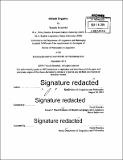| dc.contributor.advisor | David Pesetsky. | en_US |
| dc.contributor.author | Imanishi, Yusuke | en_US |
| dc.contributor.other | Massachusetts Institute of Technology. Department of Linguistics and Philosophy. | en_US |
| dc.date.accessioned | 2015-01-20T17:55:43Z | |
| dc.date.available | 2015-01-20T17:55:43Z | |
| dc.date.copyright | 2014 | en_US |
| dc.date.issued | 2014 | en_US |
| dc.identifier.uri | http://hdl.handle.net/1721.1/93029 | |
| dc.description | Thesis: Ph. D. in Linguistics, Massachusetts Institute of Technology, Department of Linguistics and Philosophy, 2014. | en_US |
| dc.description | Cataloged from PDF version of thesis. | en_US |
| dc.description | Includes bibliographical references (pages 247-260). | en_US |
| dc.description.abstract | In this thesis, I propose the hypothesis that ergative Case in certain languages may be assigned to a DP which would be otherwise Case-less within a certain domain. In this sense, ergative Case appears to be a default. At the same time, I argue that ergative Case may be assigned by any phase head to the highest Case-less DP within its Spell-Out domain (= henceforth phase head Case) - it is not just a default. This gives rise to the impression that assignment of ergative Case is a default, though it is in fact structurally determined. One of the crucial consequences of this approach is that ergative Case can be aligned with grammatical relations more flexibly than in previous approaches. Ergative may look like an 'alignment' because in the majority of sentences the subject in a transitive sentence is aligned with ergative Case. I argue that appearances are deceiving, and that if we look carefully at the full range of instances in which ergative is found, a different generalization emerges. I demonstrate that what is called ergative may constitute phase head Case in certain languages. There is no a priori reason to posit a correlation between ergative Case and grammatical relations - a DP receiving ergative Case could be either subject or object. In this thesis, I investigate (split) ergativity in Mayan languages (mainly Kaqchikel, Chol, Q'anjob'al and Ixil) as a testing ground for the plausibility of the hypothesis that phase head Case exists, and is the correct analysis of certain phenomena generally analyzed as instances of ergative alignment. I also explore possible avenues in which we can expand the scope of our analysis. For this purpose, I discuss languages outside Mayan (i.e., Chukchee, Tagalog and Kurmanji) with an eye towards the extension of the default ergative analysis to these languages. I focus on the cross-linguistically attested syncretism between ergative and oblique case, and suggest that ergative may also be assigned to an otherwise Case-less DP in these languages in parallel with Mayan languages. | en_US |
| dc.description.statementofresponsibility | by Yusuke Imanishi. | en_US |
| dc.format.extent | 260 pages | en_US |
| dc.language.iso | eng | en_US |
| dc.publisher | Massachusetts Institute of Technology | en_US |
| dc.rights | M.I.T. theses are protected by copyright. They may be viewed from this source for any purpose, but reproduction or distribution in any format is prohibited without written permission. See provided URL for inquiries about permission. | en_US |
| dc.rights.uri | http://dspace.mit.edu/handle/1721.1/7582 | en_US |
| dc.subject | Linguistics and Philosophy. | en_US |
| dc.title | Default ergative | en_US |
| dc.type | Thesis | en_US |
| dc.description.degree | Ph. D. in Linguistics | en_US |
| dc.contributor.department | Massachusetts Institute of Technology. Department of Linguistics and Philosophy | |
| dc.identifier.oclc | 899216354 | en_US |
